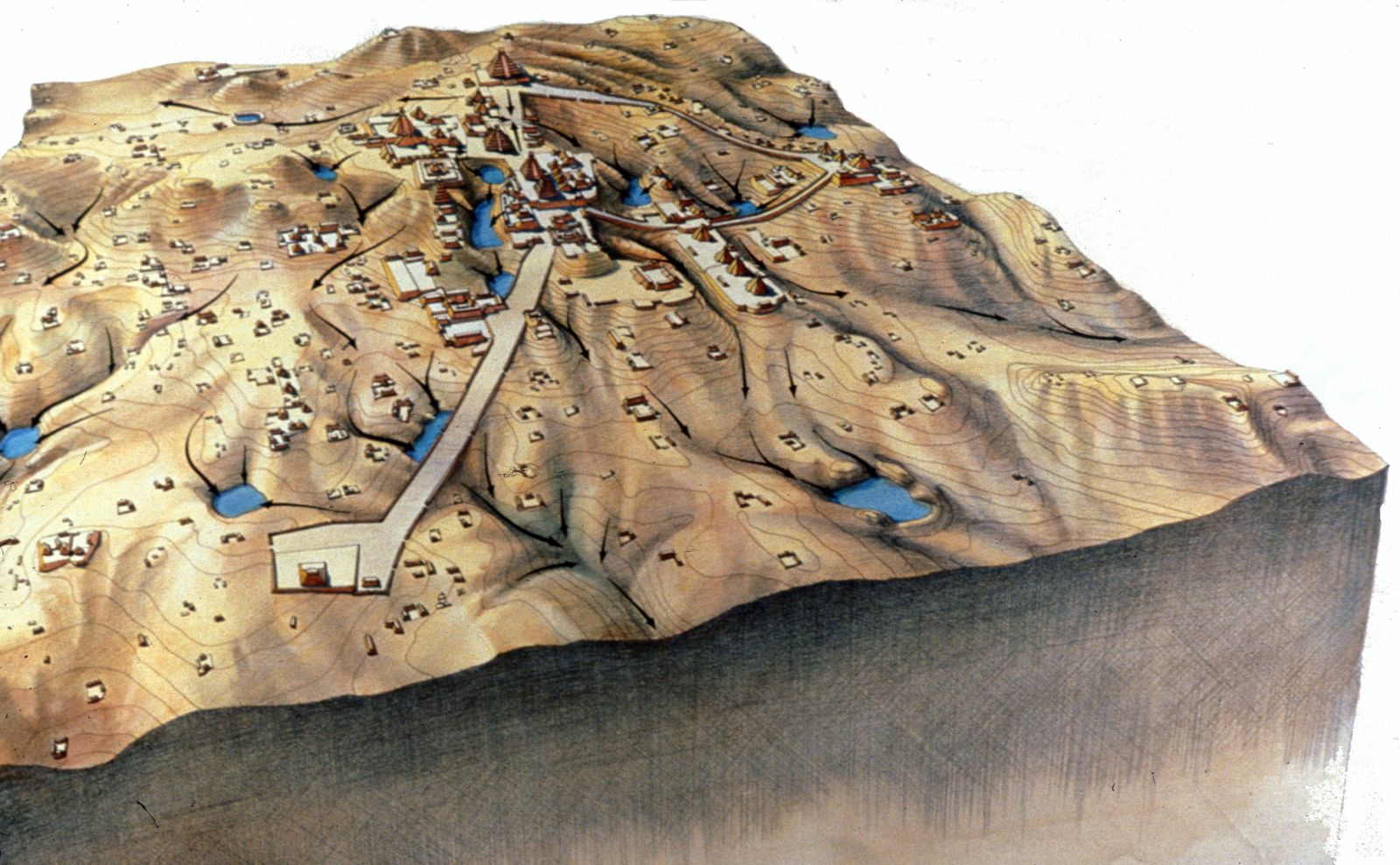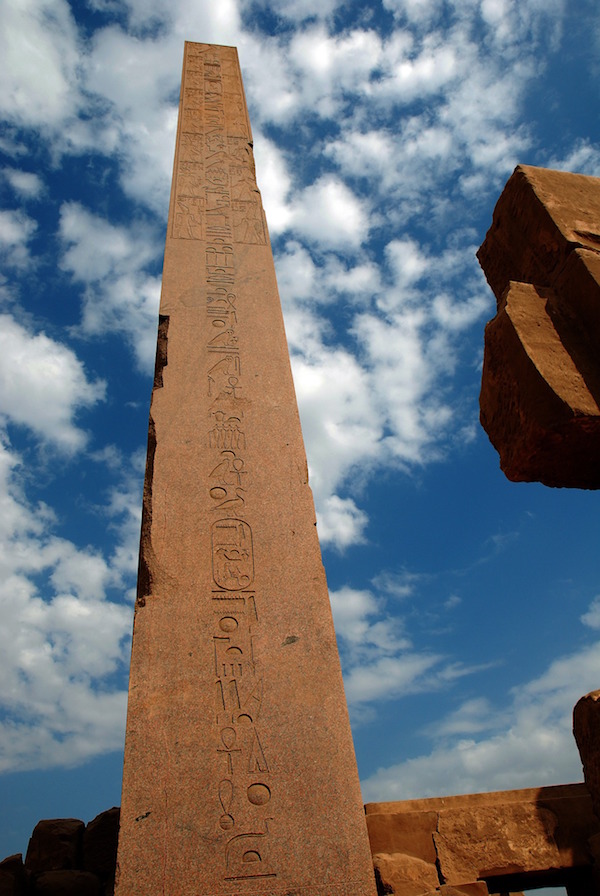Creating a guidebook for the future
In describing how many Western scholars view history, German historian Oswald Spengler used a colourful, and slightly gross, metaphor: Historians, Spengler wrote in 1918, approach the passage of time “as a sort of tapeworm industriously adding onto itself one epoch after another.” In other words, world events occur in segments, with one time period giving rise to the next in an unending line.
Like Spengler, Carole Crumley balks at the tapeworm notion of time. She is the Director of Integrated History and Future of People on Earth (IHOPE) and one of a growing number of researchers who call themselves historical ecologists – scholars who explore the past connections between humans and their environments. Many historical ecologists, Crumley says, prefer to approach history from a “complex systems” point of view in which many different factors, such as cities and climate, interact in sometimes unpredictable ways.
Crumley is the editor of a new book called “Issues and Concepts in Historical Ecology: The Past and Future of Landscapes and Regions,” which captures these and other insights from the field. She sat down recently with Future Earth to talk about the complexity of measuring time and how looking at the past can help the world to navigate the future.
IHOPE is a global research project of Future Earth. To learn more about its work, read an earlier blog here.
Daniel Strain: In your book, you describe historical ecology as a sort of chimera – an approach to studying the past that brings together a lot of divergent fields, such as archaeology, ecology and climatology.
Carole Crumley: Because interpreting the archaeological record requires many different disciplines, our collaborative project IHOPE and the framework of historical ecology require diverse information: environmental conditions, such as climate and precipitation, the cosmological, social and political organisation of people in the past so as to understand what they were doing, and why and how they were motivated.
DS: How so?
CC: Think about it in terms of looking at the map of a region, as opposed to zeroing in on a valley. One field of study might know lots about the valley, but they’re not so sure how a particular event unfolded throughout the region. Other fields would have much more understanding about the regional effects. A geologist might say, “we see a period of erosion across the entire region.” The climatologist would say, “that fits with a period of heavy rain and a climatic disruption that would have brought storms.”
A grasslands ecologist studying the 18th century haying cycle in the valley might then ask an archaeologist where people lived in that period, in order to know the pattern of adoption of a newly introduced management technique. A paleoecologist studying ancient pollen and the genetics of food residues can identify what was being grown and eaten. So archaeologists have to change scale and consult colleagues in many disciplines to be able to integrate these different data.
DS: You write that “the first thing to bring with us into the future should be a guidebook for the territory that has already been charted.” How is historical ecology helping us to build such a guidebook?
CC: Archaeologists must make a story out of our findings in order to explain them to others. A key feature of historical ecology is that we try to show whether a particular form of governance or a particular management strategy might have been especially useful in the past.
Then we ask whether there might be a way of using such insights in the future. What we’re trying to do is to take a “combine the datasets” approach to research the past and then flip ideas forward into the future. For example, the Maya had some very clever ways of dealing with the semi-aridity of the Yucatan Peninsula; such information can be useful in the neotropics today.

A map, built on several decades of archaeological research, of the ancient Maya city at the site of Tikal. The map shows how the city used architecture and the natural landscape to collect freshwater. Map: Vernon Scarborough
DS: What sort of clever ways?
CC: Access to water and the engineered landscapes of its collection and allocation are pivotal issues for assessing sustainability. Recent mapping, sediment coring and formal excavation at several Maya sites have greatly expanded understanding of ancient Maya water and land use. Ancient regional climatic instability periodically resulted in extended drought. Conditions were more like today before the 9th and 10th centuries, when a series of droughts fragmented the established political and social order. While Maya peoples still inhabit the region today, their settlements are smaller and differently organised; water management is no longer on a monumental, urban scale.
DS: But for a long time, they were resilient to such climatic shifts.
CC: It was because of landscape and engineering feats at sites like Tikal in Guatemala. They include the largest ancient dam in the Maya area of Central America; the presence of ancient springs linked to the city’s initial colonisation; the use of sand filtration to cleanse water entering reservoirs; a switching station that facilitated seasonal filling and release; and the deepest rock-cut canal segment in the Maya Lowlands. For over a millennium, the water management system was highly resilient and adaptable. These engineering achievements have implications for sustainable construction and water management systems in tropical forest settings worldwide.
In the pre-classical period, Maya managers used the karst geology of the region, where water collected in cenotes. They then built plastered-floored concave depressions for catching water and, later on, concave structures. Researchers have realised that Mayan cities are huge water towers. The water storage system is under those cities, and the collection sources are water temples.
DS: You also delve into the concept of time. A lot of people take our notion of time, a linear one, for granted. But you argue that this mainstream idea of time is a largely Western idea, and a relatively new one. What other ways have humans viewed time over history?
CC: Information in the guidebook would be how long human minds have been observing changes in their surroundings and have marked time by doing that. Astronomy is tens of thousands of years old and tightly connected to rituals and festivals that marked annual changes in the skies and in the behaviour of animals and plants. There are two main types of astronomical time: solar time and lunar time.
Ancient peoples would have known a lot about those cycles. We’ve found archaeological evidence of solar and lunar monitoring devices from all over the world. Stonehenge is the best known, but it’s not the only one, and they’re remarkably accurate. We could imagine that people were also using the pointy tops of mountains and other natural features, without having to build anything. This mode of timekeeping is called spiral or cyclical time.

An obelisk in the Karnak Temple Complex, an archaeological site in modern-day Egypt. Ancient Egyptians used the shadows cast by such structures to keep time.
DS: So a notion of time based on natural cycles, rather than a steady march?
CC: Exactly. And for them, it would have been very important because those things would have been harbingers of seasonal change: time to plant or to shelter the cattle. Such understandings would have spilled over into many other aspects of their environment.
DS: I’m gathering that there is a tremendous diversity in the way that humans have measured time.
CC: Yes. In Africa, some indigenous groups marked time by, from time to time, celebrating coming-of-age ceremonies for their young people. Thereafter each ceremony would be recalled by the special circumstances and events that occurred at that time. Taken together, these “age grades” mark the passage of time for the community. A group member might say, “That group came of age during the big moon.”
For indigenous peoples of Australia, William Gallois talks about how history is a concept that “moves across past, present and future.” They mark the past with places and events: songs that guide long treks across the desert, annual collective gatherings, intricate marriage patterns that are remembered for hundreds of years. This eternal quality comes from a cosmology centred on an eternal Now called the Dreaming, not far from Christianity’s embrace of Eternity, according to Gallois.
DS: How can researchers, and even non-researchers, reimagine time to better understand the past and the future? In your book, you argue for examining time from the point of view of many different dimensions.
CC: A good popular introduction to complex systems that offers a different perception of time is by Stuart Kauffman. A book by Manuel De Landa treats the nonlinearity of geological time. Geology is like archaeology in relying on stratigraphy, or successive layers of deposits, in a particular place, and the discipline involves considerable linear thinking.
But there are differences in the way that specific places respond to the same input. If you are trying to reconstruct changes in not a place but a in a much broader landscape, then it becomes a lot more difficult because diverse forces are at work at different scales: For example, the movement of glaciers or volcanic eruptions can spare some areas or erase evidence of whole time periods. A more fluid, flexible thinking about time is needed if we are to understand the way that elements of complex systems interact. The human body is a complex system, as is life on planet Earth.
DS: You’re trying to push us away from our notions of simple cause and effect?
CC: My favorite example is about the beginnings of World War I. Perhaps you recall the Serbian nationalist who shot the Archduke, an act that would seem to have swept many nations into a disastrous war. The problem with that kind of cause-and-effect thinking is that the origins of the conflict were economic, social, political and even psychological; those issues emerged at different times and places long before the famous assassination.
This is a problem with research on tipping points. By focusing on a single event, all of the events and circumstances that collectively allowed that tipping point to happen are ignored. A complex systems approach contextualizes and makes visible the role of other variables.
DATE
February 19, 2018AUTHOR
Daniel StrainDr. Carole Crumley
SHARE WITH YOUR NETWORK
RELATED POSTS
Spotlight on LMICs – Tired of Breathing in Pollutants? Time for Better Fuel Economy and Vehicle Standards
Future Earth Taipei Holds 2024 Annual Symposium
Spotlight on LMICs – The Future’s Juggernaut: Positioning Research as Anchors for Environmental Health